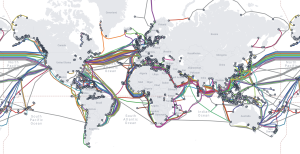Starlink: Revolutionizing Global Connectivity with Satellite Internet
Starlink, the focus keyword of this article, is a satellite internet constellation developed by SpaceX, founded by Elon Musk. The primary objective of Starlink is to provide high-speed, low-latency internet connectivity worldwide, especially in areas where traditional fiber optic and cellular networks are unreliable or non-existent. With the launch of its first satellites in 2019, Starlink has been rapidly expanding its constellation, with over 3,000 satellites currently in orbit.
How Starlink Works
Starlink uses a network of low-Earth orbit (LEO) satellites to provide internet connectivity. Each satellite is equipped with a phased array antenna, which enables it to communicate with multiple users simultaneously. The satellites are connected to a network of ground stations, which are responsible for transmitting and receiving data to and from the satellites. The data is then routed to its destination through the internet. Starlink’s satellites are designed to be highly efficient, with a lifespan of approximately 5 years, after which they will be deorbited and replaced with new satellites.
Benefits of Starlink
Starlink offers numerous benefits, including global coverage, high-speed internet, low latency, and mobility. With its satellite constellation, Starlink can provide internet connectivity to remote and underserved areas, bridging the digital divide and enabling access to essential services such as education, healthcare, and financial services. Starlink’s high-speed internet, with speeds of up to 1 Gbps, and low latency, of approximately 20 ms, make it an attractive option for online gaming, video streaming, and other high-bandwidth applications. Additionally, Starlink’s mobility feature allows users to access the internet from anywhere, making it ideal for use in vehicles, aircraft, and other mobile applications.
Impact of Starlink
The impact of Starlink on global communication will be significant, with the potential to revolutionize the way we access and use the internet. Starlink will enable people in remote and underserved areas to access the internet, enabling them to participate in the global economy and access essential services. Starlink will also have a significant impact on the environment, as it will reduce the need for traditional fiber optic and cellular networks, which require extensive infrastructure and resources to deploy and maintain. Furthermore, Starlink will enable the deployment of IoT devices in remote areas, enabling real-time monitoring and control of critical infrastructure, such as power grids, water supply systems, and transportation networks.


